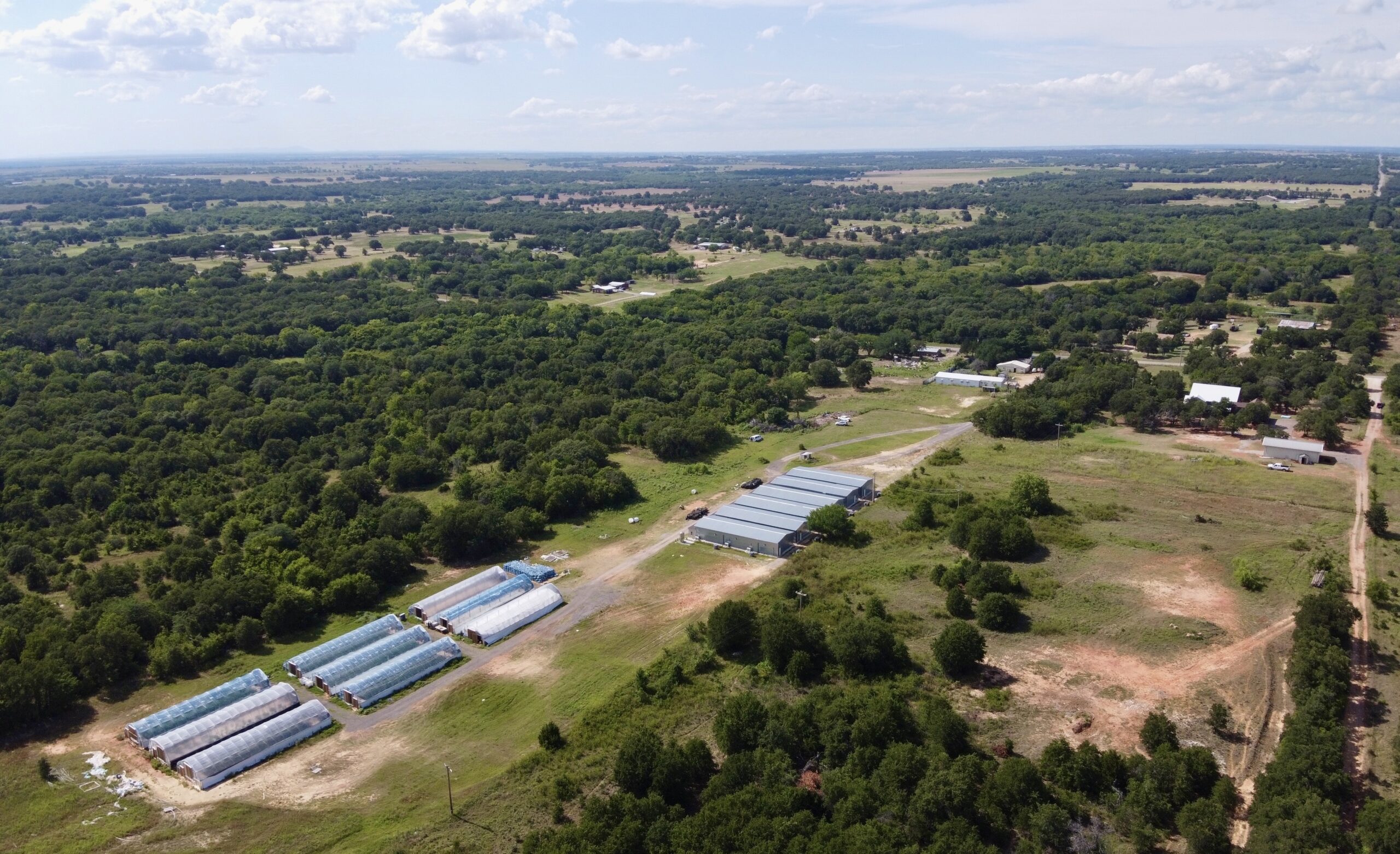[[{“value”:”
Housing prices, particularly in rural areas, are up significantly since Oklahoma legalized medical marijuana, according to a new study.
The study, published in Cambridge University’s Journal of Agricultural and Applied Economics, attributes rising property values to a real estate buying spree from marijuana growers.
Researchers examined people’s perceived impacts of medical marijuana legalization and also tried to measure the effects of the industry on the state.
Brian Whitacre, one of the paper’s authors and a professor of agricultural economics at Oklahoma State University, told The Frontier that the issue of increased home prices was not on the researchers’ radar until people at a community meeting in Okemah brought it up.
“We didn’t expect to see a big impact on the housing values, but when we went to Okemah, people were telling us they can’t afford to buy a house in the place where they grew up,” Whitacre said. “We heard stories of cash offers for places when they weren’t even for sale.”
The marijuana boom after voters approved legalization in 2018 fostered hundreds of new businesses and millions of dollars in new tax revenue.
By 2021, marijuana grows in the state outnumbered traditional wheat and cotton farms. Oklahoma ranked first in the nation in 2024 for the number of marijuana dispensaries per -capita.
The researchers began their study by holding a community meeting in Okemah in September 2023 that drew 25 people. Participants voted on their top concerns about the industry, including health, safety and misinformation. The group’s discussion on property largely centered around land and houses being purchased by “outside speculators” and driving up local prices and property taxes.
Most focus group participants were generally supportive of the industry.
“We thought most of the comments were gonna be negative and that was not the case at all,” Whitacre said. “A lot of people saw the positive impacts of the dispensaries, they were pretty well thought of. Dispensary owners actually came to our meeting, and people had pretty high opinions of them, so it wasn’t as negative as we thought it would be.”
The researchers then analyzed county-level property value data in Oklahoma and compared that with similar values in neighboring states.
The analysis showed that counties with the highest number of marijuana grows per capita had an increase in housing values of 20% to 25% over five years. The increase was higher than in comparable counties in Kansas and Texas, where marijuana is not legal. Counties with high numbers of dispensaries, however, did not show a similar trend to those counties with a high number of grows.
The upward trend in housing values began about 20 months after voters approved the measure making medical marijuana legal, the study found. The authors stated they thought the increase was driven by a surge in growers coming into the state between late 2020 and early 2022 and continued over time.
The analysis validated the Okemahs residents’ perceptions that they were being priced out of the market, the study found. Home values in Okfuskee County grew from $72,500 at the time of legalization to $120,158 by June 2023, according to Zillow’s inflation-adjusted home value index.
Okemah Mayor Ron Gott said the area indeed saw a broader housing and land price increase because buyers seeking land for marijuana grows often paid far more than the market value for those properties. The buyers included marijuana growers from China, he said.
“We’ve seen an increase due to the fact that some of the Chinese came in with just wads of money and paid big amounts for land that wasn’t really worth what they paid for,” Gott said.
And those increased housing and land prices have made it more difficult for some Okemah residents to purchase property, he said. Gott said he has seen properties purchased by growers that should have sold for around $3,000 an acre sell for closer to $10,000 an acre.
“For a young person that’s going to actually purchase land, to go out and pay an exorbitant price like they paid for these grow facilities acreages, they just can’t afford it,” Gott said.
Carl Alls, a longtime Okemah real estate agent, said he did notice property prices going up during the boom, and while the number of properties marijuana growers paid a premium for likely did have an impact on housing prices, other factors, such as high lumber and building material prices, likely played a role in increased home prices as well. Property prices were already on the rise before the arrival of the marijuana growers, he said.
“The prices were going up anyhow, because in our area we’ve had relatively really cheap land here for a long time,” Alls said. “I’m seeing homes selling for more than they did, and all of that has more to do with the price of lumber than these grows.”
Gott, Alls and other real estate agents in Okemah who spoke with The Frontier said several of the smaller marijuana cultivators in Okfuskee County are now no longer in business and the county is seeing a decline in the number of grows after the state has cracked down on illegal operations.
“}]] Okemah residents told researchers about marijuana growers showing up with wads of cash to buy property at inflated prices. Real estate values increased more in areas with high numbers of marijuana farms, the study found. Read More


